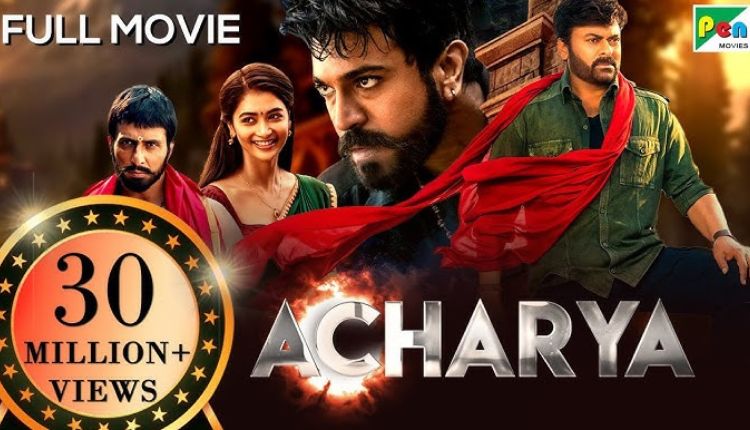A silent film made in 1913 by Dadasaheb Phalke, who is considered the father of Indian cinema. This time set the stage for what would eventually culminate into a massive cultural movement in the upcoming years. Although the films were silent, their visual storytelling and emotive performances attracted audiences all over the country. Alam Ara, the first Indian talkie, was released in 1931, signaling the shift in cinematic language.
The Golden Era of Storytelling Hindi Cinema
The 1950s and the 1960s are regarded as the golden age of Hindi cinema. The Golden Period is considered to be the 1950s and the 1960s, dominated by actors like Raj Kapoor, Dilip Kumar, and Dev Anand, whose performances left a profound impression. These were movies characterized by solid stories, emotional resonance, and poetic dialogue. Music was fundamental, with songs composed by such maestros as S.D. Burman and Shankar-Jaikishan and performed by such legends as the singer Lata Mangeshkar and Mohammed Rafi. Films like Mughal-e-Azam, Mother India, and Pyaasa are still relevant today because of their timeless themes and artistry.
Her Journey Through Different Themes Hindi Cinema
Hindi cinema mirrored the transformations that accompanied social, political, and economic changes in India. Starting with the 1970s and 1980s, the genre known as “masala films,” which incorporated action, romance, comedy, and drama all in one narrative, was born. During this period, actors like Amitabh Bachchan became cultural phenomena in the “angry young man” role, as in Zanjeer and Deewaar. The writing turned towards social injustice, corruption, and class struggles that reflect the constant frustrations of the common man.
Technological Innovations in Hindi Cinema
The 1990s and early 2000s saw major technological progress in Hindi cinema. New cameras, digital editing , and visual effects improved the production quality of movies. Indian films reached audiences around the world, especially through international collaborations and film festivals. Films such as Dilwale Dulhania Le Jayenge, Lagaan, and Kabhi Khushi Kabhie Gham found their way into hearts not just in India but also among the Indian diaspora worldwide. They showcased Indian traditions, values, and cultural vibrancy through entertaining & emotive storytelling.
New-Age Filmmakers: Hindi Cinema
Over the past few years, there has been a lot of new talent entering the world of Hindi cinema and new-age filmmakers looking to experiment with new themes and styles of telling stories. With the infusion of realistic and relatable films by directors like Anurag Kashyap, Zoya Akhtar, Shoojit Sircar, etc. These content creators have avoided the cookie cutter and brought in stories about mental health, sexuality, gender roles, and socio-political writing. Movies like Pink, Article 15, and Gully Boy have all been hailed by critics for their courageous narrative structure and superb on-screen acting.
Evolution of Female Characters in Hindi Cinema
The biggest change in Hindi cinema can be seen in the way female characters are depicted. Women held narrow roles in previous decades — as damsels in distress or dutiful housewives. Yet, modern-day cinema has allowed strong, independent female lead roles. Actresses such as Vidya Balan, Alia Bhatt, and Taapsee Pannu have essayed characters that are complicated, multi-dimensional, and inspiring. Films like Kahaani, Raazi, and Thappad feature female protagonists who take charge of their lives and challenge societal order.
Impact of Streaming Services Hindi Cinema
OTT platforms — Netflix, Amazon Prime Video, and Disney+ Hotstar — have completely changed how Hindi films are made and experienced. These platforms have offered filmmakers the space to tell unconventional stories without the burden of box office numbers. It has also given audiences access to much more diverse content outside the realm of mainstream cinema. And series and films like Sacred Games, Delhi Crime, and Bulbbul have shown there is an audience for subtle, genre-defying storytelling in the Hindi language.
Society And Its Perception Of Hindi Cinema
Hindi cinema has traditionally been much more than just entertainment — it is a reflection of society. Bollywood has a considerable influence on the cultural identity of the majority of Indian citizens, from highlighting social concerns to setting fashion trends and vernaculars. Lines from movies are repeated ad nauseam, songs become anthems, and stars are role models. Movies can spark discussions, shape opinions, and make things happen. This influence, though, does not come without a responsibility to tell subjects authentically and empathetically.
Future Of Hindi Cinema
There are bright days ahead for Hindi cinema. There is an increasing demand for meaningful, original storytelling as audiences become more discriminating. Thanks to new technology like virtual production and AI, the possibilities of visual imagination are endless. In addition, a more regional and linguistic inclusivity is apparent with the rising trend of dubbing or subtitling Hindi films in different languages to cater to a wide range of viewers. Globalized future with international partnerships training Donna Hines While We Work With International and T customizing studios.
What’s Next?
Hindi cinema has traveled the journey from black-and-white talkies to world-renowned blockbusters and thought-provoking streaming shows. Now, rooted in its cultural heritage, it has continued to evolve, adapt, and push boundaries. There is real beauty in every twist in its narrative history. it remains an integral part of India’s cultural fabric, often capturing emotions, dreams, and stories that resonate like music in the ears of millions. Whether it’s the magic of romance, the thrill of action, or the power of storytelling, Hindi cinema occupies a unique space for audiences in India and worldwide.


